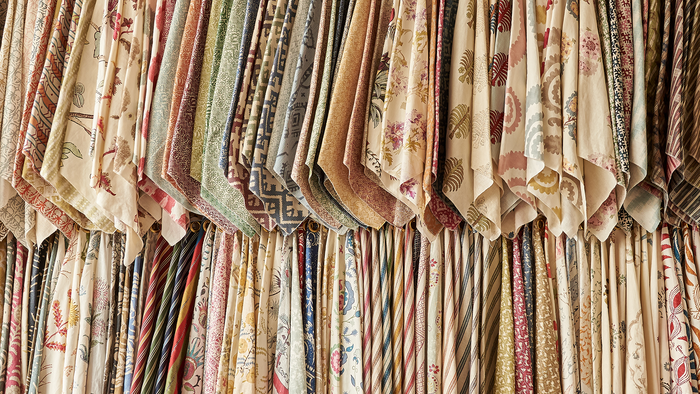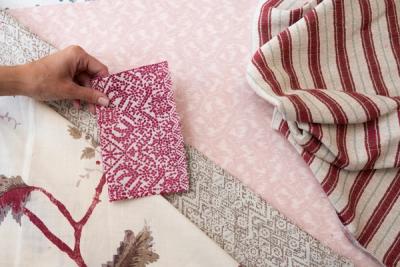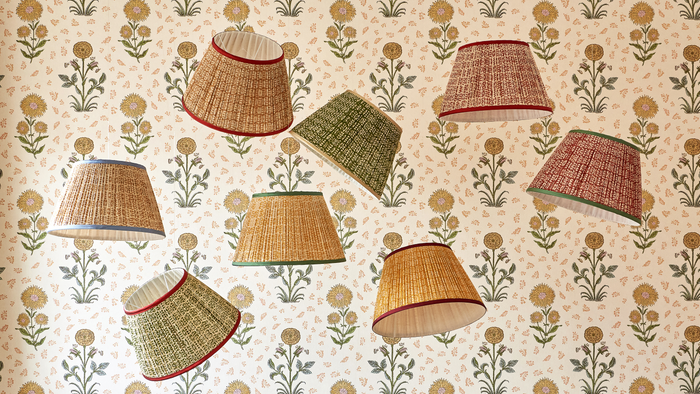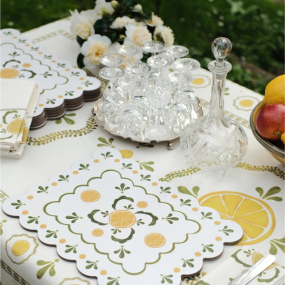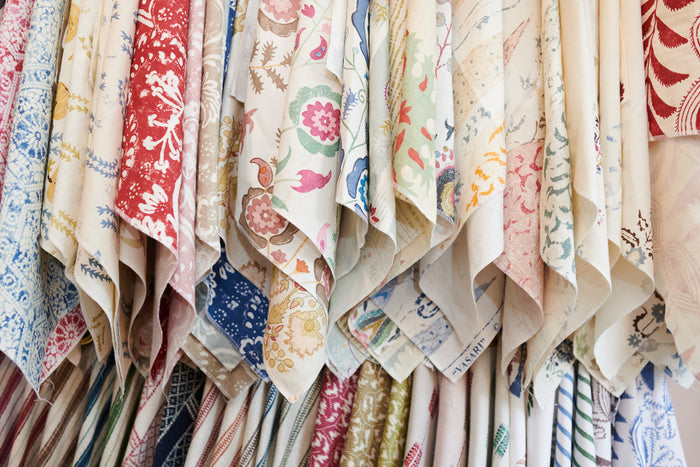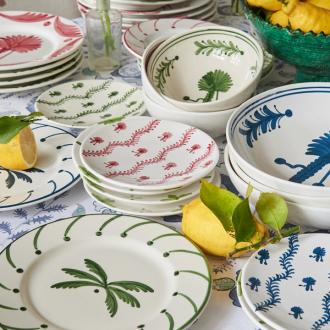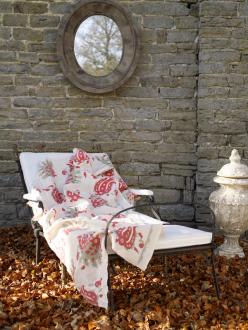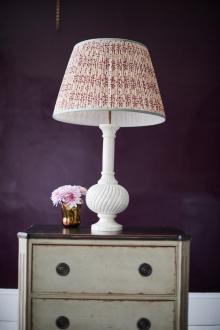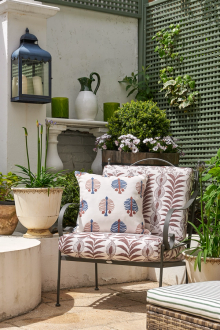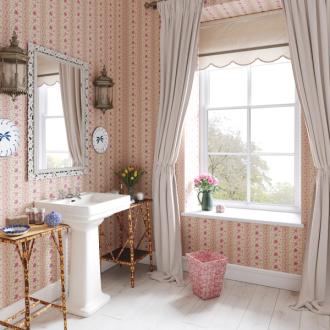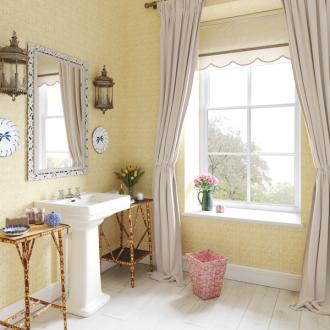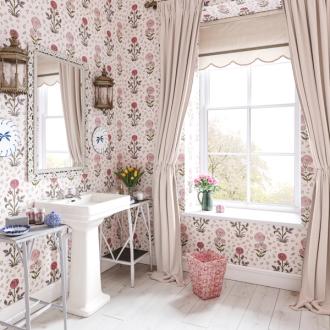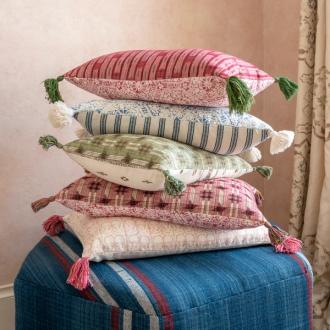The Penny Morrison Guide to Caring for Fabrics in the Home
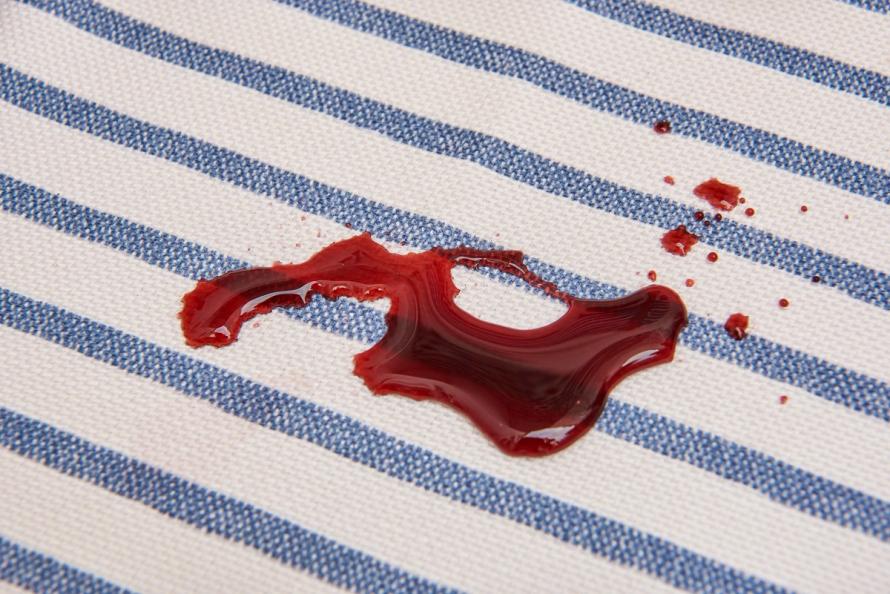
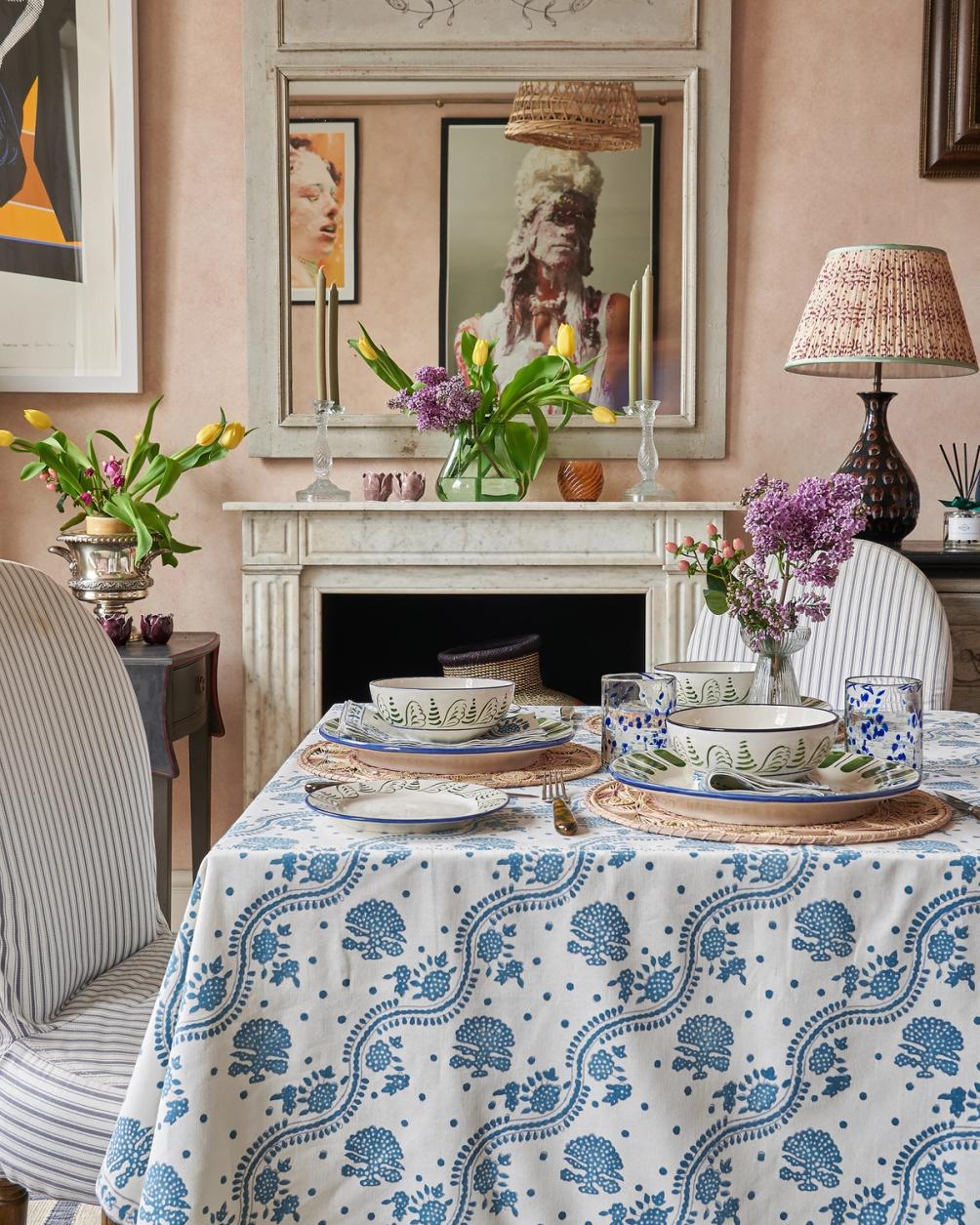
There’s no place like home, and there’s no feeling in this world quite like the one we feel when the home has been given a fresh breath of life, and a sense of rejuvenation has filtered in through the rooms. While time away means we are able to appreciate our homes all the more when we get back, a similar sense can be found simply in walking back into a room that has been treated to a spring clean – whatever the season.
All fabrics deserve our care and attention, not least of all because, if we can do right by them, they can last us for many, many, many years. But, even so, the most durable fabrics come with their own lists of Dos and Don’ts, or, sad as it may be, they won’t weather the storm of family life.
From shoes left on past the threshold to muddy paws, spilled food and drink and frenzied play session, a lot can happen in the blink of an eye.
At Penny Morrison, the longevity and long-term beauty of our fabrics lies at the very heart of our philosophy. For that reason, we have put together a comprehensive guide to caring for the fabrics around your home, so that they continue to look as good as they do now, for a long, long time.
A General Guide to Caring for Natural Fabrics
There are plenty of reasons why natural textiles like cotton and linen make for such beneficial staples to have about the home. Beyond their versatility and beauty, they are among the most durable fabrics out there – and, for the most part, easy to keep fresh and clean. While some practices do pose something of a risk to them, this is true of any fabric, and, once you know what to avoid, it needn’t be a constant bugbear.
Linen and cotton are naturally breathable, and adept at wicking moisture from their surroundings, which helps to keep them feeling and looking fresher for longer. This means that day to day maintenance is kept quite simple and that, for the most part, you won’t need to spend time worrying about their upkeep.
Another great quality to note about linen is its ability to soften over time. When freshly woven, linen will have a crisp, somewhat stiff feel to it, as a result of those strong flax fibres. With use and wear, these fibres break down a little – not to the detriment of the linen’s strength, but to your benefit. The fabric will remain strong and tightly woven but will grow more comfortable and welcoming as time passes.
Wherever you place your fabrics, you’ll want to be thoughtful about where you place your fabrics in relation to the windows, since sunlight can take its toll over the years. It never hurts to rotate the room’s layout every so often, in order to prevent one small part of the sofa, chair, or ottoman from seeing more direct sunlight than the rest.
Beyond that, you will want to pay special attention to fabrics that are exposed to humid or damp environments. While natural textiles offer far better breathability than synthetics, they will start to suffer if they’re exposed to less-than-favourable conditions for too long.
Nevertheless, there is more to it than a quick pass-over with the lint roller every couple of days.
Furniture
The textiles you choose for the sofa and armchairs are arguably some of the most vulnerable to spills, stains, marks, and damage. Through the years, they see plenty of use – from Sunday afternoon gatherings around the Monopoly board to midnight snacks, coffee spills, pet paws, and sleepovers. That’s why choosing the right upholstery fabrics is so important – and why we are heavily in favour of the durability and strength of natural fibres like cotton and flax.
Similarly, the dining room chairs are put through their paces – while other pieces, like the headboard, still need their fair share of attention. It’s always a good idea to have easy-to-remove covers, particularly when the children are young, but, obviously, that’s not always an option.
Day to Day Care
While you needn’t feel compelled to bring the hoover out of its hiding spot every day of the week, it never hurts to keep your upholstery looking fresh with a quick hoover – or, of course, a lint roll. Dust, crumbs, and pet hair won’t do any major harm to your furniture, but the longer they stay there, the higher the chances they’ll get driven deeper into the weave and prove harder to shift later on.
When it comes to spills, the most important thing you can do is avoid rubbing or scrubbing the area. This can push the stain deeper into the fibres. Instead, dabbing excess liquid away with a warm, damp cloth or sponge will help to wick moisture from the area, thus limiting the spill’s ability to soak in and cause lasting damage.
A very small amount of glycerine dabbed (not rubbed) onto the stain can help to shift more stubborn stains like coffee, but never use any heavy-duty stain removers, as they could impact the fabric’s colour.
Some people like to sprinkle a little bicarbonate of soda onto their linen furniture, leave it for a couple of minutes, then hoover it off. This can neutralise any odours caused by pets sleeping regularly on the furniture.
Serious Stains and Bigger Cleans
Ultimately, however, stains still apparent after the spill has dried will need to be dry cleaned. Slipcovers and cushion covers can, of course, be easily removed and taken to the dry cleaners, but for upholstery your best option is to reach out to a professional, with the tools to clean linen upholstery. Think of it a little like a visit from the dry cleaner, and a far better option than attempting to clean out the stain yourself.
Why is dry cleaning better than washing?
Because it reduces the risk of damage and shrinkage. In a machine, even on a gentle cycle, the amount of warm or water required to get the fabric clean is enough to cause those natural fibres to shrink. What this means is that, after even a brief, gentle wash, upholstery, and cushion covers may not fit back in place in quite the same way as before.
Dry cleaning is a gentler process. It doesn’t immerse the fabric in liquids and detergents, but allows stains, odours and dirt to be extracted without so much heat, and without the use of so many chemicals.
The Curtains
Curtains rarely fall high on the list of things about the home that require attention. For the most part, they do their job away from the hustle and bustle that our furniture and other soft furnishings are subjected to and enjoy a relatively calm role in the home.
Nevertheless, as can only be expected from large sheets of fabric hung at the edges of a busy (or, for that matter, quiet) room, they will gradually start to accumulate dust, odours, and other miniscule pieces of detritus that any other part of the home experiences on a daily basis.
Any small marks or stains can be spot cleaned in much the same way as you would spot clean furniture. Try to stay on top of shaking any dust out of pooling curtains, since those extra few inches at the bottom tend to attract it, and don’t be afraid to give the curtains a firm shake to free up any dust before you hoover the room.
Newly cleaned curtains have quite a major influence on a room. Like a professionally cleaned carpet, they suffuse the room with a palpable sense of freshness. This is one of the reasons why we consider ourselves proponents of the seasonal curtain, which we’ve written about here, because it represents the perfect incentive to cycle a few different pairs of curtains and give the room a refresh every three to six months.
How do I clean linen curtains?
The key to keeping your linen curtains clean and beautiful is to never put them in the washing machine. Even the gentle, handwash settings can be too much for your linen, and could cause it to shrink or warp.
Instead, it’s better to set aside a time to take down all of the curtains throughout your home and bring them all to the dry cleaners in one lot. They will be able to use much gentler cleaning techniques, that preserve your linen’s original colour, shape, and length.
How about ironing?
No, it’s best not to iron linen curtains. In fact, unless they are damp through, it can be quite difficult to make any real impact with an iron – and, if you do, you will lose that distinctive crease pattern than makes linen, linen.
How often should curtains be replaced?
It depends on the fabric quality, as well as the level of care you can invest into them but, generally, a pair of cotton or linen curtains should last you for a very long time – decades, even.
The trick is to get into a routine, and to cycle through a few different pairs so that each one has time to be cleaned and put away for a season.
Cushions and Pillows
While it depends entirely on the extent to which they’re used (and who they’re used by), the general consensus seems to be that it’s best to send them off for a good, thorough clean around twice a year. If someone in your household is more sensitive to dust, then you may want to think about doing this a little more frequently but, provided they are well cared for, most linen and cotton cushion covers will last a fairly long time between trips to the dry cleaners.
A General Guide to Caring for Performance Fabrics
As the name suggests, caring for performance fabrics is relatively straightforward. These textiles are designed to withstand a significantly heavier level of use around the home and garden, and as is only fitting, they will be quite forgiving even if they aren’t given buckets of attention during the weekly clean-around.
Performance fabrics have a very high rub count, which means that they don’t need to be handled with kid gloves just to stay looking good. They can be used outside, or in high-demand areas of the home like the playroom or ‘pet corner’, without much worry at all.
Machine Washing Trevira CS
At Penny Morrison, all of our performance fabrics are composed from Trevira CS, a high-quality performance fabric that can be machine washed at 40 degrees. Unless heavily soiled, they will only require a quick clean, so maintaining these fabrics is a lot better on the environment.
Machine washing does not impact the fabric’s other qualities either, such as its flame resistance and its ability to remain colour fast.
Caring for Outdoor Furniture
One of the easiest options for long-lasting, comfortable outdoor furniture is to keep your soft furnishings – the seat cushions, throw pillows, and floor pillows – loose, so that they can be quickly whipped away if it starts to rain. Then again, if you have the storage space, it can be just as easy (and better for the furniture) if you can take the entire piece away from the elements in one go.
Any spills should be wiped up as soon as possible. As with linen and cotton, dabbing the stain with an absorbent cloth is much better than scrubbing at it. If anything remains after dabbing, a quick wash of your slipcover at 40 degrees will do the trick.
If you want more information about performance fabrics, then you can read our full guide here.
Every fabric behaves differently, but they are all united by the fact that, the truer you can stay to their original care instructions, the longer they will last you. It is perfectly possible to keep a durable, natural textile like cotton or linen looking beautiful for many, many years – and, provided you know how to do it, it’s not a difficult or time-consuming chore, either.
